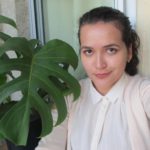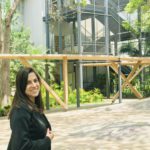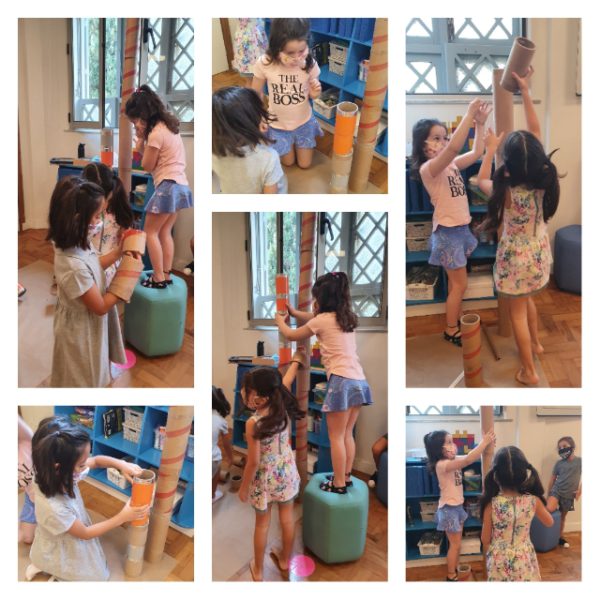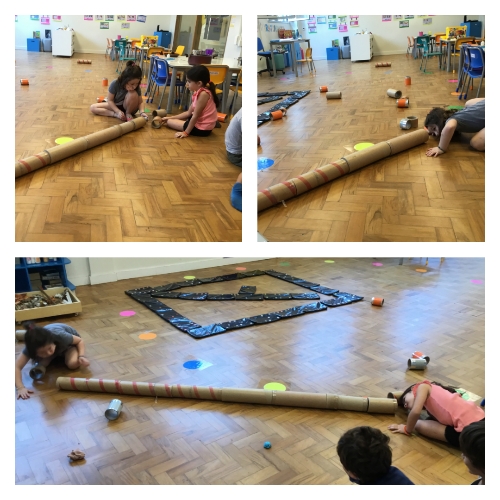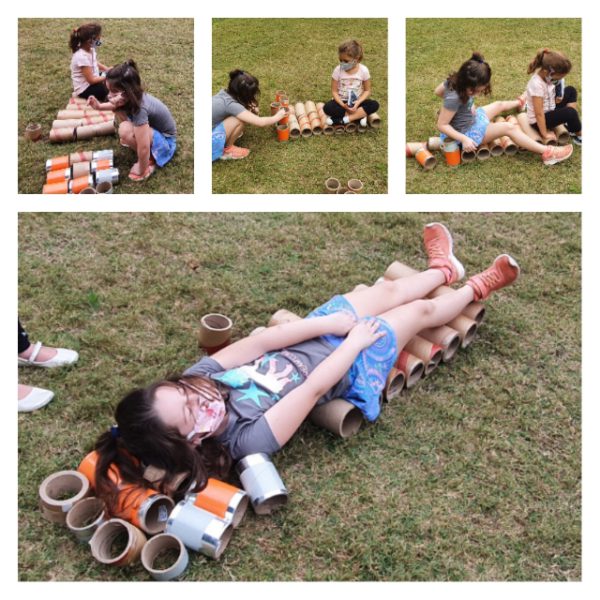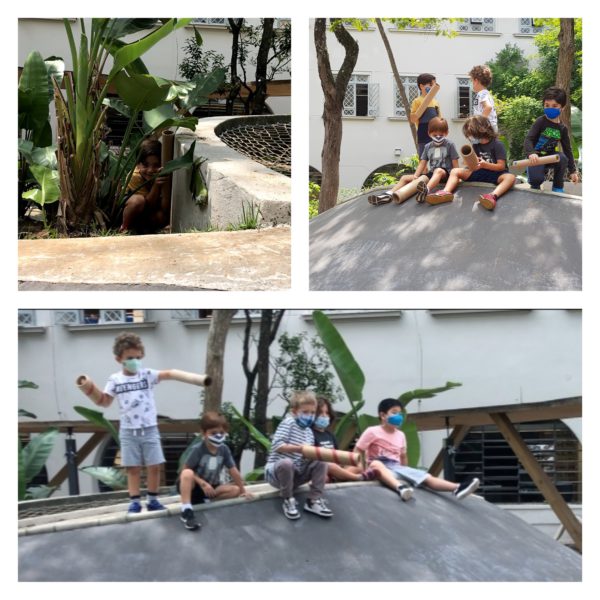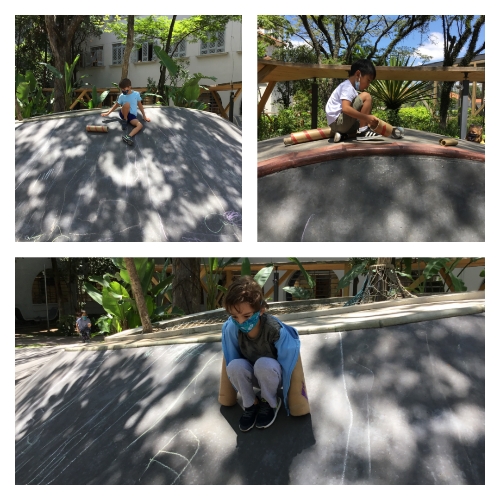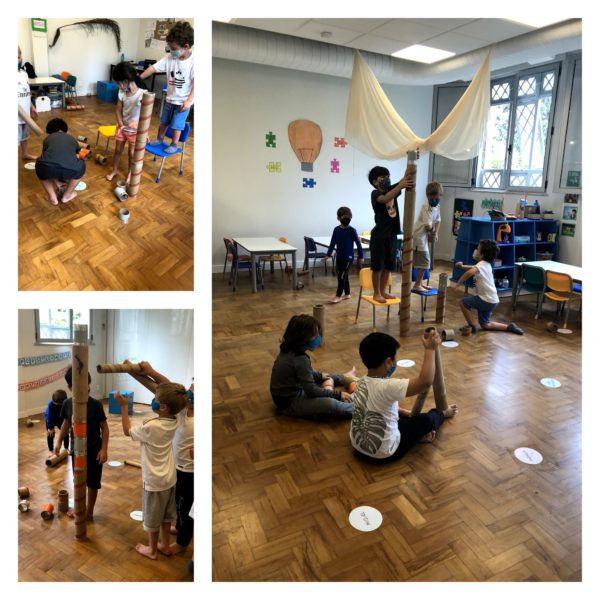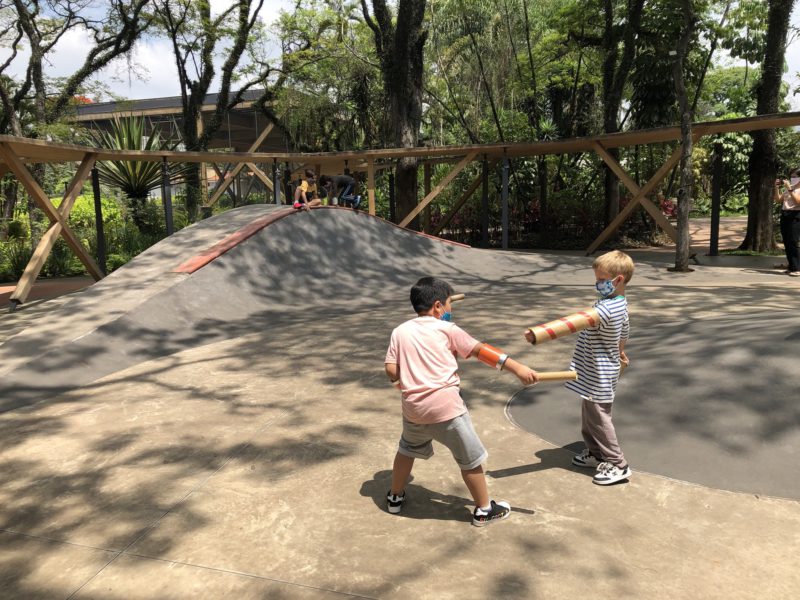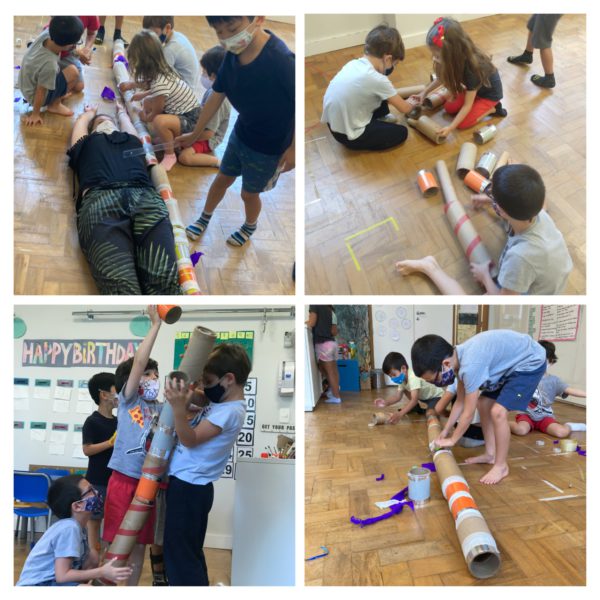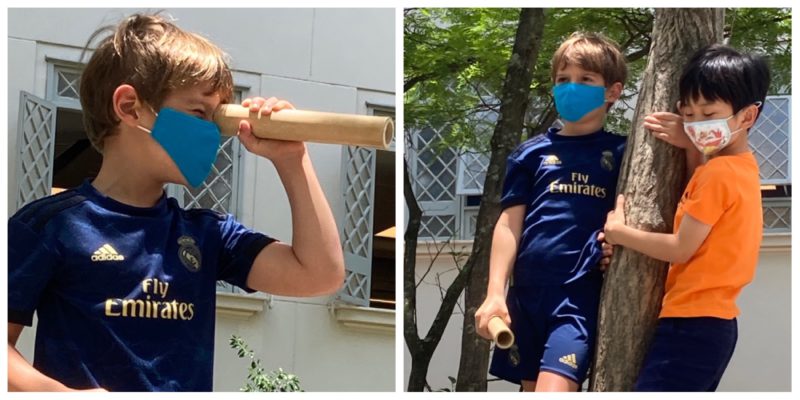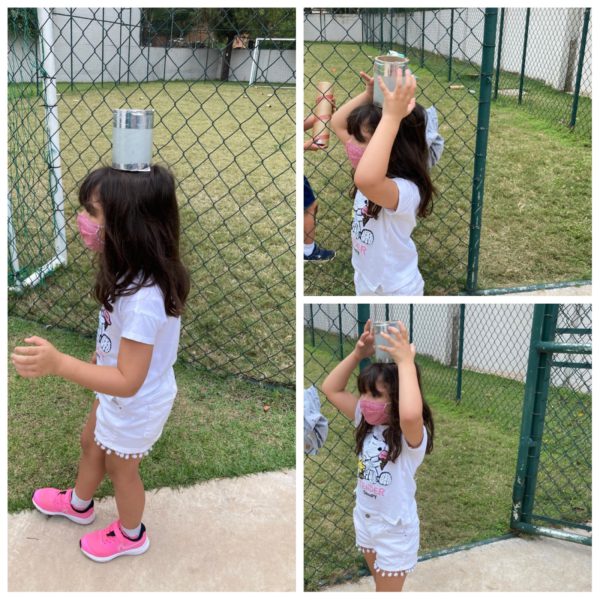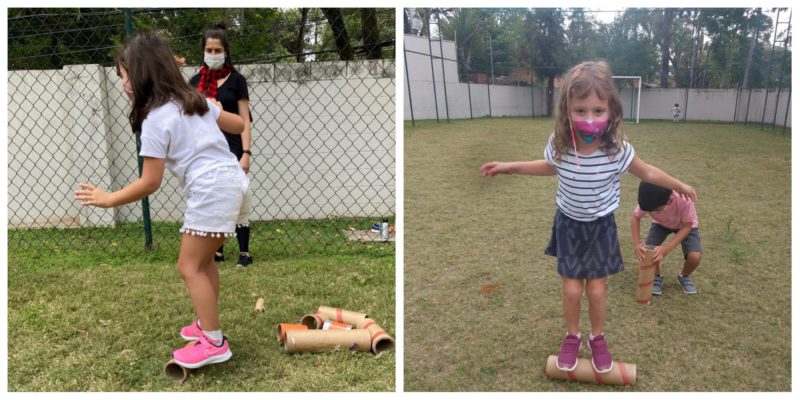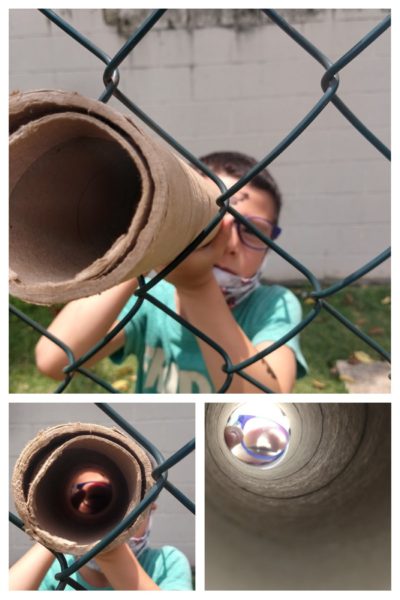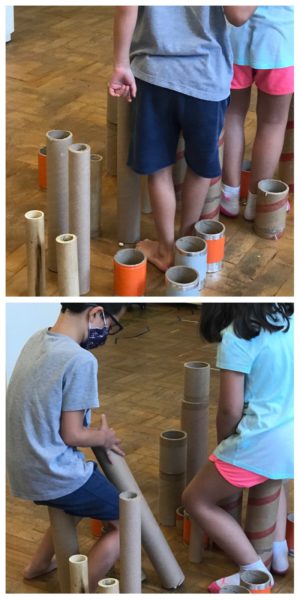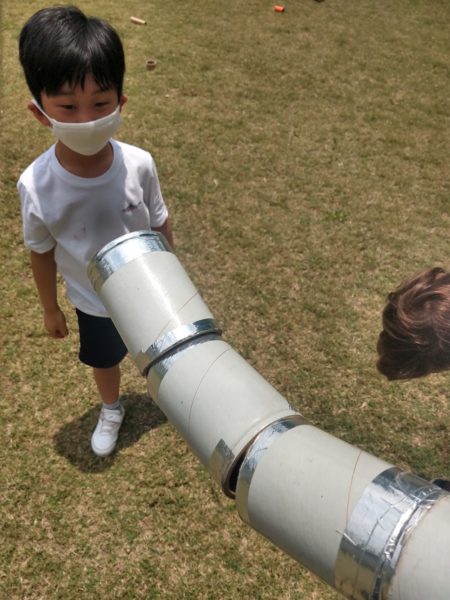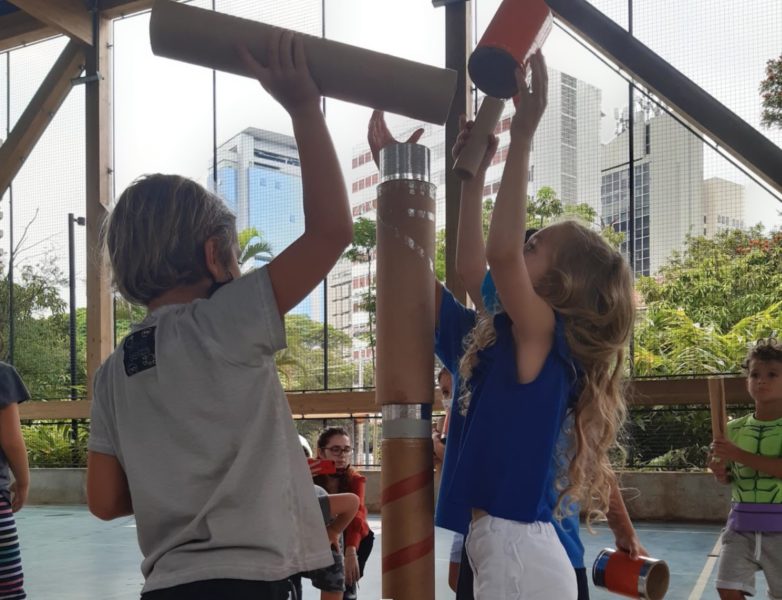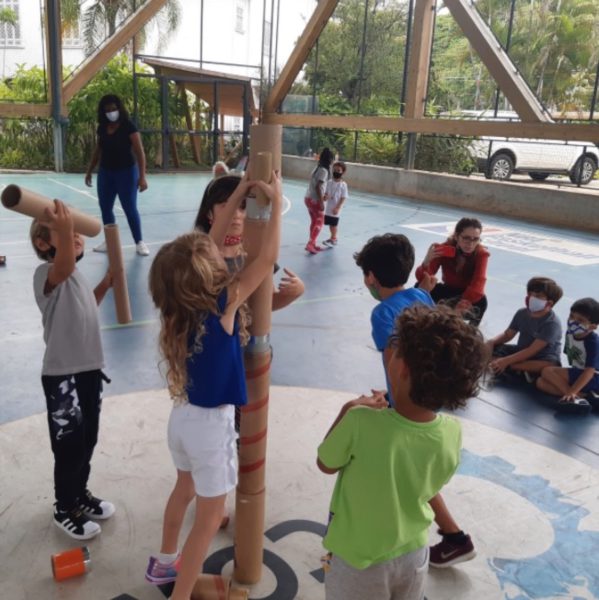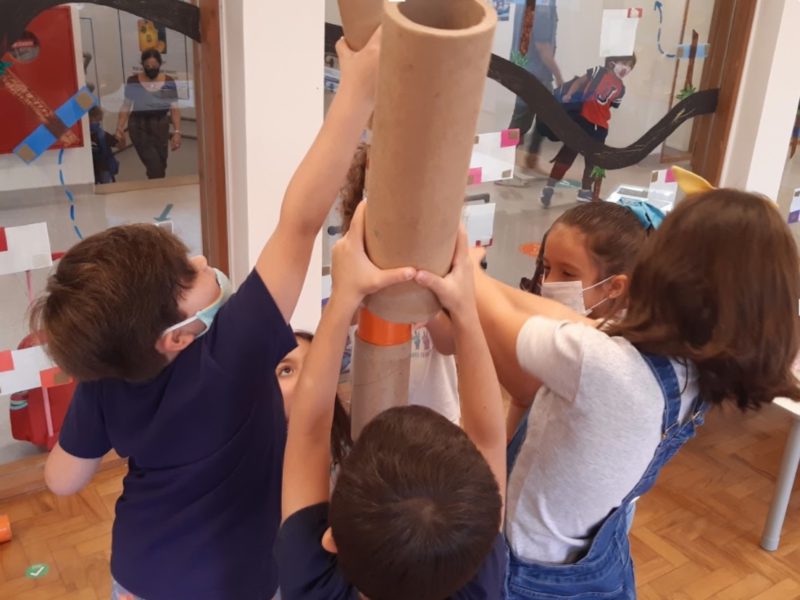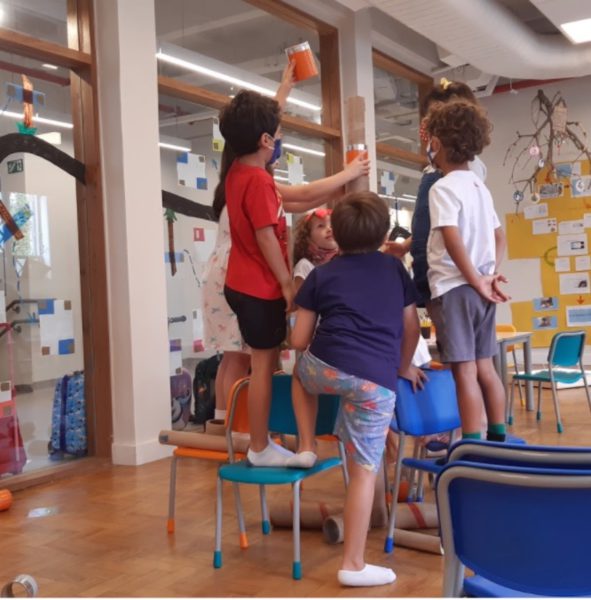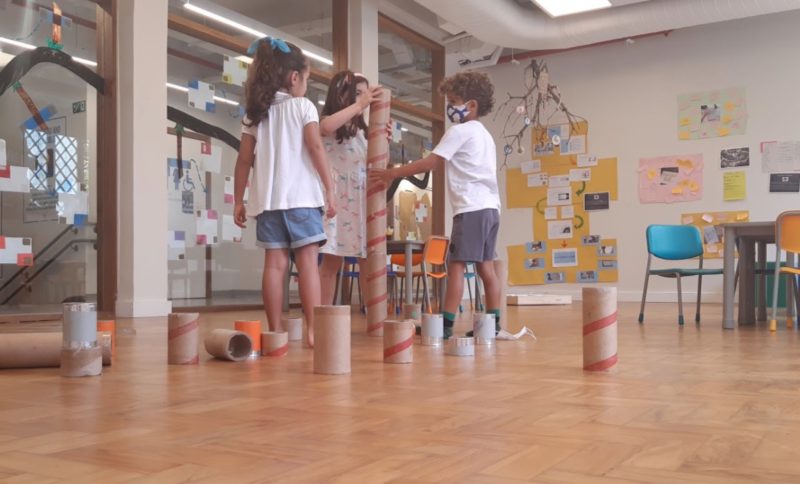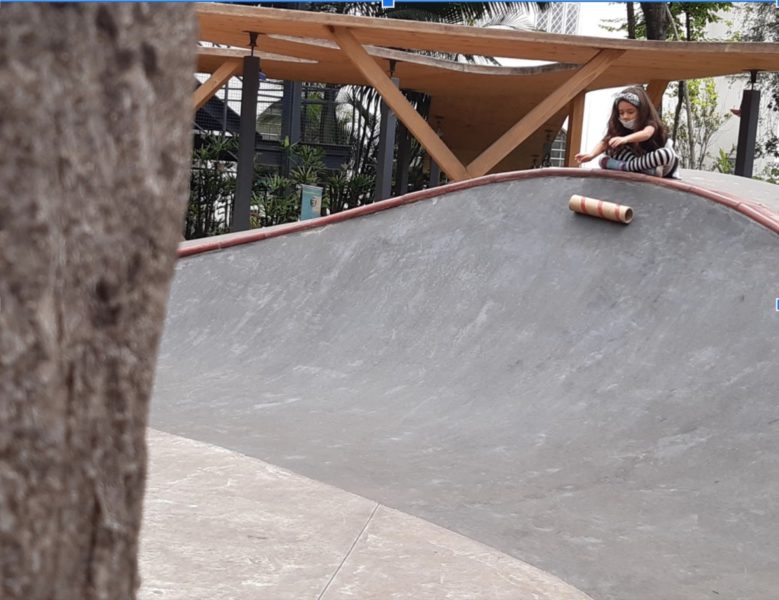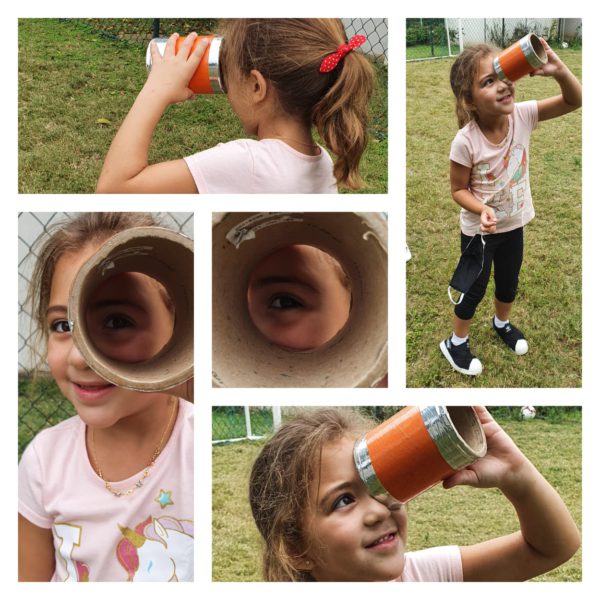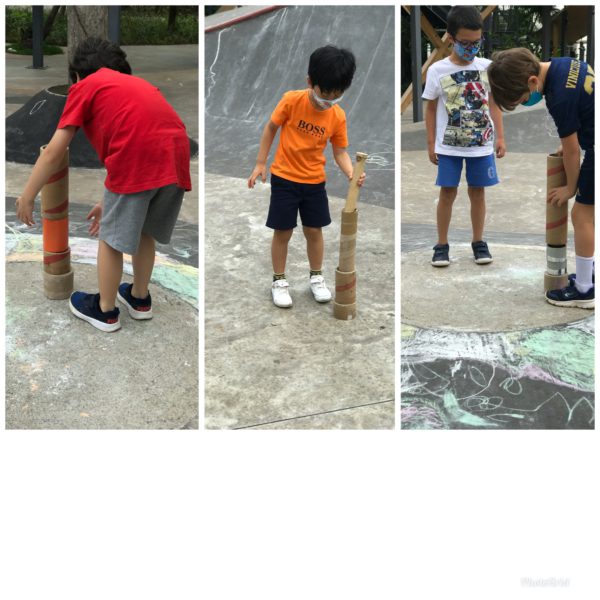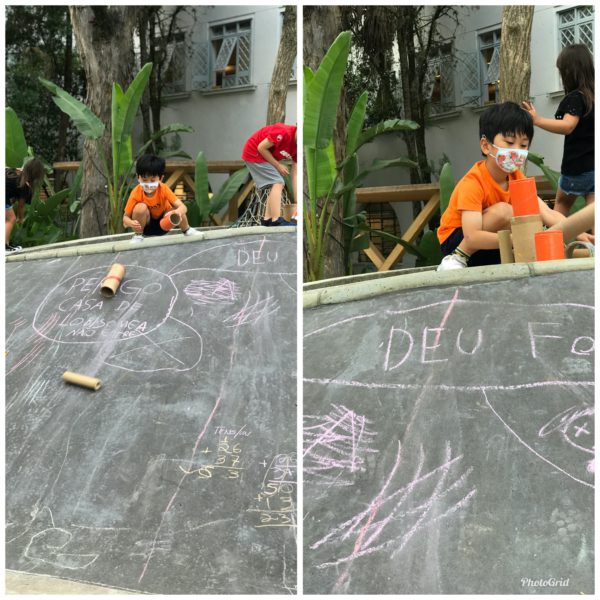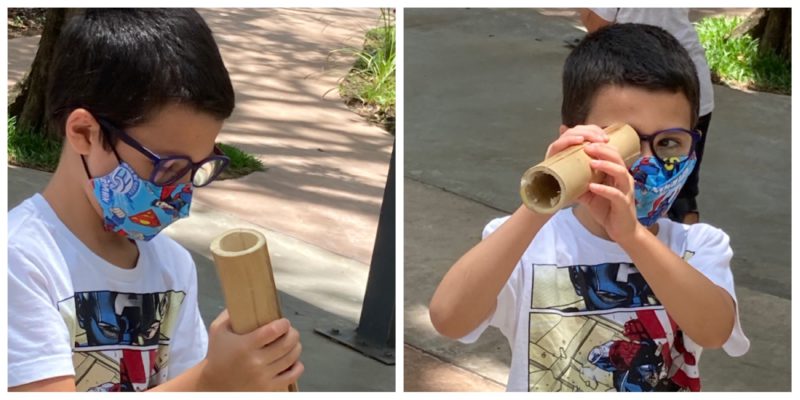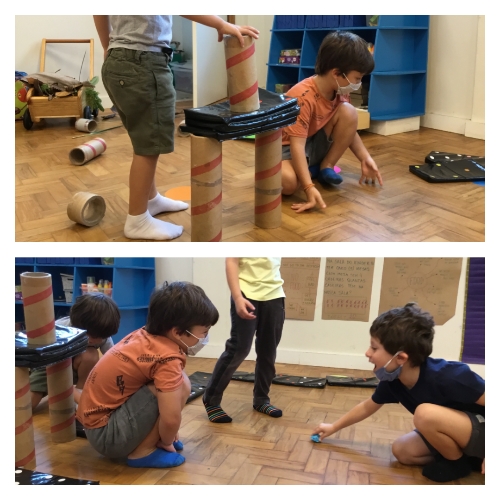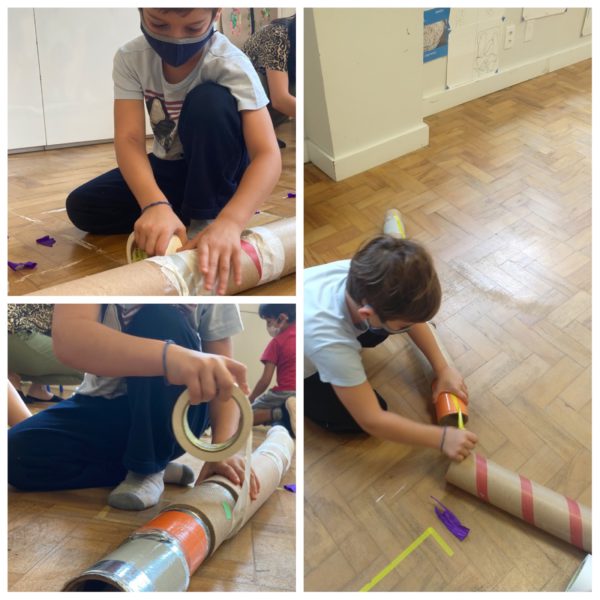One material, three environments and various possibilities
How do different environments influence in playing?
General topic of interest
Four different groups, same environments, same materialities, but different choices of playing. Observing children playing is a gift, and through this research we were able to look deeper at the interaction with materialities and the different ways that learners organized playing.
Focused on our question, we noticed that the imagination when combined with the environment can unfold in many explorations and researches. If you got curious to know more about this topic, check our website by clicking HERE. There, you will be able to see all steps and takeaways from our research.
Participants
Kindergarten learners from Escola Concept, São Paulo
Data collecting approach
We used pedagogical documentation as the main tool to intensify our active listening and increase our reflection on what has been observed.
Data collecting example
We offered the kids some open ended material in different places: learning space, skate park and soccer field.
Reflections
Although our research does not culminate in a conclusion, we list new possibilities about the influences that different enviroments have on play. Through the research question, we realized that the environments showed similar potentialities between the choices of games and interaction with the spaces. It was possible to observe that the learners chose to play in groups or mini groups, in order to make more contributions focused on reaching the goal of play: stacking the tubes, for example when inside the learning space. The dialogue was continuous and had two main intentions: sharing ideas and solving possible problems, and creating rules for the games. Despite the main intentions, we noticed a greater range of possibilities in open environments, connected to nature, which led students to use the rolls as different tools for their investigative and creative processes.




